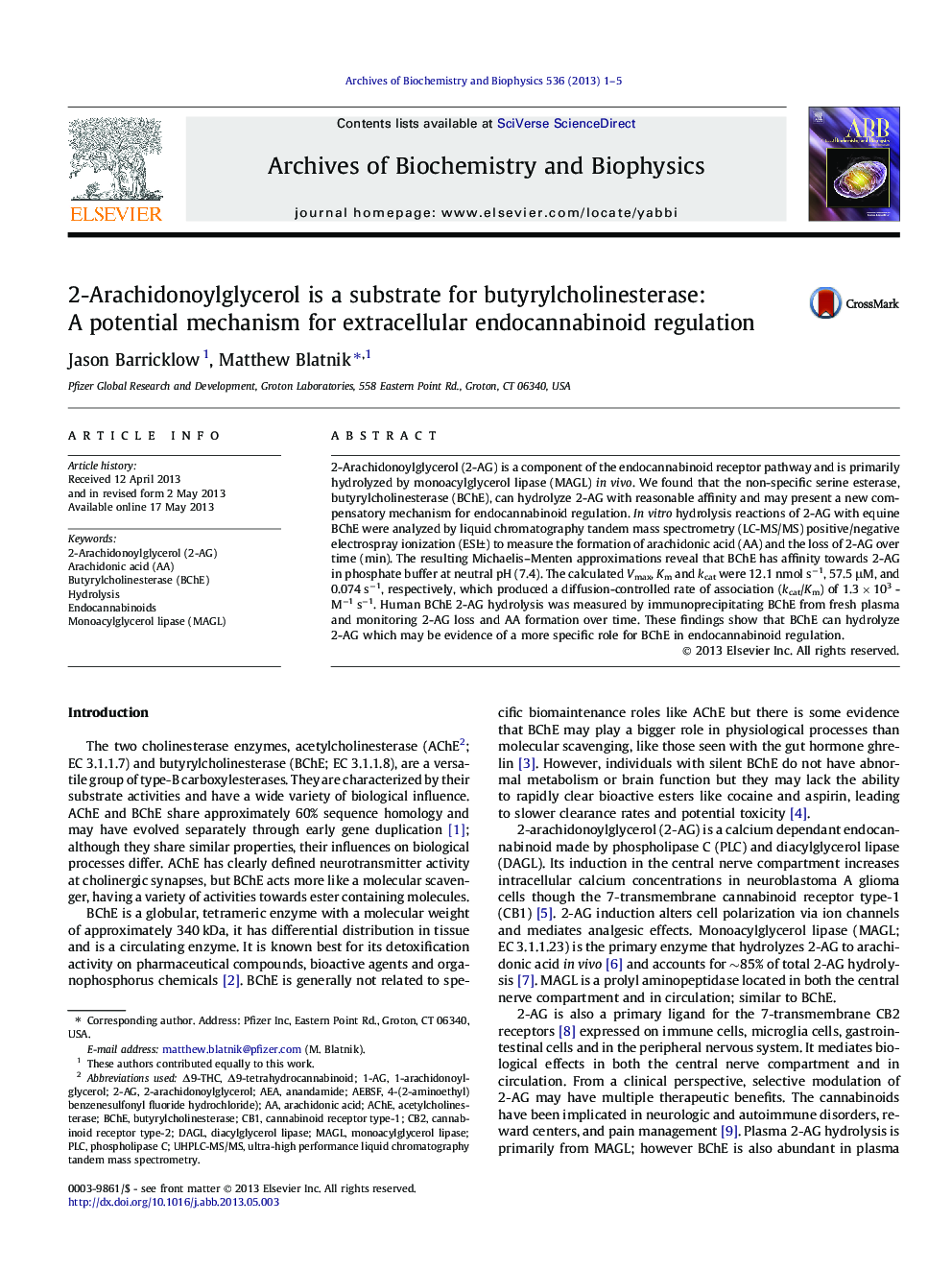| Article ID | Journal | Published Year | Pages | File Type |
|---|---|---|---|---|
| 8290774 | Archives of Biochemistry and Biophysics | 2013 | 5 Pages |
Abstract
2-Arachidonoylglycerol (2-AG) is a component of the endocannabinoid receptor pathway and is primarily hydrolyzed by monoacylglycerol lipase (MAGL) in vivo. We found that the non-specific serine esterase, butyrylcholinesterase (BChE), can hydrolyze 2-AG with reasonable affinity and may present a new compensatory mechanism for endocannabinoid regulation. In vitro hydrolysis reactions of 2-AG with equine BChE were analyzed by liquid chromatography tandem mass spectrometry (LC-MS/MS) positive/negative electrospray ionization (ESI±) to measure the formation of arachidonic acid (AA) and the loss of 2-AG over time (min). The resulting Michaelis-Menten approximations reveal that BChE has affinity towards 2-AG in phosphate buffer at neutral pH (7.4). The calculated Vmax, Km and kcat were 12.1 nmol sâ1, 57.5 μM, and 0.074 sâ1, respectively, which produced a diffusion-controlled rate of association (kcat/Km) of 1.3 Ã 103 Mâ1 sâ1. Human BChE 2-AG hydrolysis was measured by immunoprecipitating BChE from fresh plasma and monitoring 2-AG loss and AA formation over time. These findings show that BChE can hydrolyze 2-AG which may be evidence of a more specific role for BChE in endocannabinoid regulation.
Keywords
Related Topics
Life Sciences
Biochemistry, Genetics and Molecular Biology
Biochemistry
Authors
Jason Barricklow, Matthew Blatnik,
